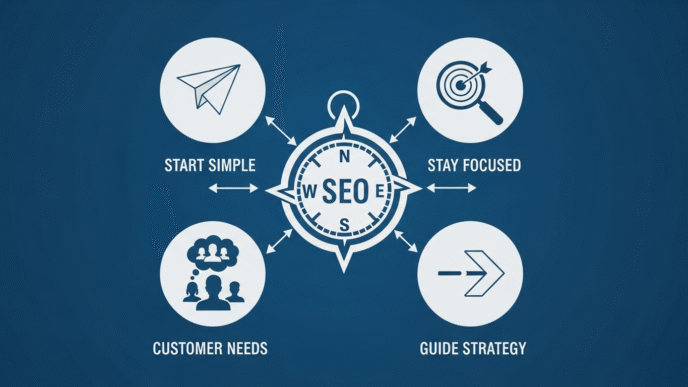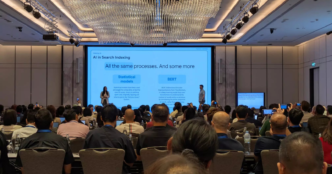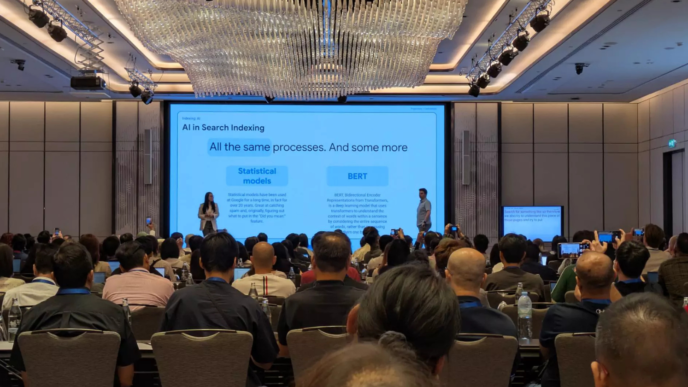Table of Contents
ToggleGoogle June 2025 Core Update Recoveries: Tale of Two Internets After 16-Day Algorithm Rollout
Google’s June 2025 core update, which wrapped up July 17 after a turbulent 16-day rollout, has become a tale of two internets. While some websites celebrated their first meaningful traffic recovery since the infamous September 2023 helpful content update, others watched their rankings crater in what industry experts are calling one of the most consequential algorithm shifts in recent memory.
The Comeback Kids: Recovery After 700+ Days
The update’s most remarkable feature wasn’t what it destroyed—but what it resurrected. After nearly two years of digital purgatory, some websites hit by Google’s September 14, 2023 helpful content update experienced their first substantial ranking improvements.
“Yes, almost 2 years ago. So, we started to report about those recoveries,” noted Barry Schwartz, Contributing Editor at Search Engine Land, referring to the timeline since the September 2023 update that devastated countless content sites.
However, the recovery pattern proved frustratingly selective. “A lot of people did not see recoveries. A lot of sites that were hit by this September helpful content update or previous core updates did not see any recoveries,” Schwartz cautioned, tempering expectations for the broader ecosystem of affected sites.
By the Numbers: A Volatile 17-Day Journey
The June 2025 update officially began at 7:34 AM PDT on June 30 and concluded at 1:00 AM PDT on July 17—taking exactly 16 days and 18 hours to complete. But the real action didn’t start until July 2, when ranking fluctuations first materialized across search results.
“The effect of the June Core Update in the US rose to levels above that which we saw in the March Core Update,” according to SISTRIX’s analysis, which tracks volatility across one million search results daily.
The update unfolded in distinct waves:
- Wave 1: July 2-3, initial broad changes detected
- Wave 2: July 9-11, affecting different domain sets
- Peak Chaos: July 11-14, maximum volatility period
- Wave 3: Final adjustments in the last three days
Expert Voices: Mixed Reactions from the Trenches
The SEO community’s response reflected the update’s polarizing nature. While some celebrated long-awaited recoveries, others faced fresh devastation.
“Google clearly adjusted something on its end with regard to its systems that evaluate the helpfulness of content,” observed Glenn Gabe, a prominent SEO consultant, suggesting fundamental changes to Google’s content quality algorithms rather than surface-level tweaks.
The human cost became evident in community forums, with one webmaster posting: “June core update ’25 has finished. My sites are decimated for the time being, it seems. Decimated…first in many many years operating.”
Another reported: “Google banned my website. Traffic dead, Adsense dead.”
Yet success stories emerged alongside the casualties. One site owner noted: “Since July 8 traffic is steadily up 20% (1.0K UVs up to 1.2K daily average).”
What Google Actually Changed
Unlike typical core updates that focus on broad quality improvements, the June 2025 update appeared to specifically recalibrate Google’s “helpfulness” evaluation systems—the same mechanisms that triggered the controversial September 2023 update.
“This is a regular update designed to better surface relevant, satisfying content for searchers from all types of sites,” Google stated in its official announcement, though the selective recovery patterns suggest more targeted algorithmic adjustments.
John Mueller from Google characterized this as one of the “bigger Google Search updates,” acknowledging its significant scope while maintaining Google’s standard position that core updates aim to improve overall search quality.
The Lingering Question: Why Now?
The timing raises intriguing questions about Google’s algorithmic strategy. Despite promising more frequent core updates in 2025, the June update marked only the second confirmed major algorithm adjustment of the year.
“Google said back in December of 2024 that we should expect more core updates more often, and we haven’t seen that. We’ve seen two core updates so far and it’s mid year,” Schwartz noted. “That’s the same number of core updates we saw in 2024 by this time.”
Strategic Implications for Website Owners
The update’s completion doesn’t mark an endpoint but a new beginning for affected sites. Industry experts recommend a measured approach to analysis and response.
“Most of you probably would have already seen any ranking fluctuations already with the core pages on your website. So, you’ll probably know by now if you were actually impacted in a positive, negative, or neutral way with this update,” Schwartz advised.
For accurate impact assessment, experts recommend: “Do a delta report to see how you were ranking before this core update and after this core update. And you could actually see if you were actually impacted in a positive or negative way.”
Looking Forward: The New Search Landscape
The June 2025 update signals Google’s continued evolution toward more sophisticated content evaluation, particularly around helpfulness and user satisfaction. The selective nature of recoveries suggests the algorithm has become more nuanced in distinguishing between genuinely helpful content and SEO-optimized material.
“Google will do periodic refreshes to this algorithm but may not communicate those updates in the future,” Schwartz warned, suggesting this major update might be followed by quieter refinements.
As the dust settles, one thing remains clear: Google’s definition of “helpful content” continues evolving, and website owners must adapt accordingly. The June 2025 update may have closed one chapter for some sites, but it’s opened an entirely new playbook for navigating Google’s increasingly sophisticated ranking systems.
Market Implications: The New Digital Economy Divide
The June 2025 core update’s selective recovery pattern has created what industry analysts are calling a “digital economy divide”—separating winners and losers in ways that could reshape entire market segments.
Content Publishing: A Tale of Two Ecosystems
The update has fundamentally altered the content publishing landscape, creating distinct winners and losers across different business models:
Premium Publishers Surge Ahead Established media outlets and authoritative content hubs experienced significant visibility gains. “Industry-focused content hubs with high trust and relevance are seeing visibility gains,” according to Ignite Digital’s analysis of post-update performance patterns.
This trend suggests Google’s algorithm increasingly favors sites with clear editorial standards, expert contributors, and established domain authority—advantages that traditional publishers maintain over newer digital-first competitors.
Affiliate Marketing Bloodbath The affiliate marketing sector bore the brunt of negative impacts, with many sites reporting traffic drops exceeding 50%. The update appears to have specifically targeted thin affiliate content and comparison sites lacking genuine expertise or first-hand product experience.
“Traffic swings are common, especially for sites with unclear value or poor formatting,” noted industry observers, highlighting how Google’s evaluation criteria now extend beyond basic content quality to assess genuine user value.
E-commerce Ecosystem Reshuffling
The update’s impact on e-commerce reveals a clear preference for certain business models over others:
Brand-Direct Winners Major brands with substantial content investments saw ranking improvements across informational queries related to their products. This trend favors companies that have invested in educational content, detailed product guides, and expert-authored resources.
Marketplace Aggregators Hit Hard Third-party marketplace sites and price comparison platforms experienced significant ranking declines, suggesting Google’s algorithm now better distinguishes between sites that add genuine value versus those that primarily aggregate existing information.
The SME Reality Check
Small and medium enterprises (SMEs) face a particularly challenging new landscape. The update’s emphasis on expertise and authority signals creates higher barriers to organic visibility for smaller players.
Resource Allocation Pressure SMEs now must choose between investing in content depth (fewer topics, more expertise) or breadth (more topics, less depth). The update clearly rewards the former approach, forcing strategic pivots for businesses previously relying on volume-based content strategies.
Local Business Implications Local businesses with strong community connections and genuine local expertise appear to benefit from the update’s emphasis on authentic, helpful content. However, those relying on generic, templated content strategies face increased competition from larger, more authoritative sources.
Investment and Valuation Impacts
The update’s winners and losers pattern has immediate implications for digital asset valuations and investment strategies:
Content Portfolio Revaluation Websites previously valued based on traffic volume now require reassessment based on traffic quality and sustainability. Sites that recovered from the September 2023 update represent significantly undervalued assets, while others face potential write-downs.
M&A Strategy Shifts The clear algorithmic preference for expertise and authority is driving acquisition strategies toward sites with established editorial teams, subject matter experts, and proven content quality systems rather than pure traffic metrics.
Industry-Specific Disruptions
Healthcare and Finance Lead Recovery YMYL (Your Money or Your Life) sectors showed some of the strongest recovery patterns, suggesting Google’s continued emphasis on expertise in sensitive topics. Sites with medical professionals, financial advisors, and certified experts as content contributors experienced disproportionate gains.
Technology Content Consolidation The tech content space saw significant consolidation effects, with established publications gaining traffic at the expense of newer, less authoritative sources. This trend particularly impacts developer resources and technical tutorial sites lacking clear expertise signals.
Long-term Strategic Implications
The Expertise Economy The update accelerates the transition toward an “expertise economy” in digital content, where demonstrable subject matter expertise becomes the primary competitive differentiator rather than SEO optimization or content volume.
Content Investment Patterns Organizations must now allocate resources toward expert hiring, credential verification, and authority building rather than traditional content marketing tactics. This shift particularly challenges companies in technical or specialized industries.
Platform Dependencies The update’s volatility underscores the risks of over-dependence on organic search traffic, potentially accelerating investment in email marketing, social media, and direct traffic acquisition strategies as risk mitigation measures.
Global Competitive Dynamics
Geographic Authority Signals Early analysis suggests the update may favor content with clear geographic expertise and local authority signals, potentially impacting how international businesses approach content localization strategies.
Language and Cultural Factors The global rollout’s impact varies significantly across different languages and regions, creating opportunities for businesses that can demonstrate cultural expertise and local market understanding.
Forward-Looking Market Predictions
Based on the update’s patterns and Google’s stated priorities, several market trends appear likely to accelerate:
- Consolidation in Content-Dependent Industries: Smaller players lacking expertise credentials may struggle to maintain organic visibility
- Premium Content Monetization: Sites with recovered traffic may command higher advertising rates and subscription fees
- Expert Network Development: Businesses will increasingly invest in relationships with credentialed experts and thought leaders
- Content Quality Verification Systems: Demand for content authentication and expertise verification tools will likely increase
“Now that this June 2025 core update is done, you can start to dig in to see how you and your clients were impacted,” Schwartz advised. “You can review Google’s guidance and continue to improve your site, which hopefully will lead to better Google ranking in the future.”
The June 2025 update doesn’t just represent an algorithmic shift—it signals a fundamental reordering of the digital content economy, rewarding depth over breadth, expertise over optimization, and authentic value over manufactured engagement. Organizations that adapt their strategies accordingly stand to benefit significantly, while those clinging to outdated approaches face an increasingly challenging competitive landscape.
For website owners affected by the update, Google maintains its standard guidance: focus on creating genuinely helpful content for users rather than optimizing for search engines. The algorithm rewards sites that consistently deliver value, expertise, and trustworthiness—principles that remain constant even as the technical implementation continues evolving.
Related posts:
- The Great Ranking Upheaval: How Google June 2025 Core Update Triggered the Biggest SEO Shakeup in 4 Years
- How Internet Standards Are Made: A Google Engineer’s Guide
- Google Removes SEO Reference Local Ranking Documentation: What This Means for 2025
- SEO is Far From Dead 2025: Data-Driven Reality Behind AI Search Revolution












